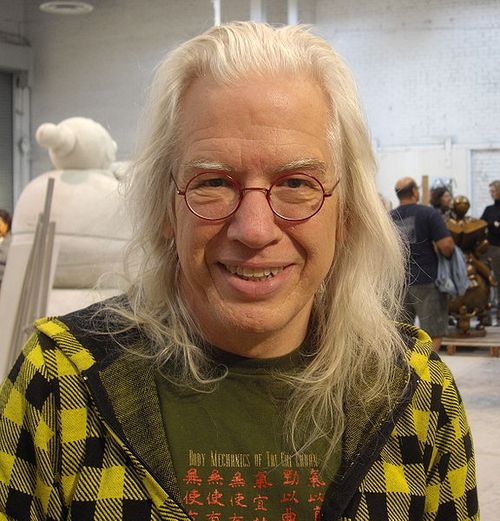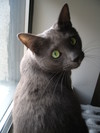
Tom Otterness in his studio in Brooklyn, NY. Photograph by Dmadeo
NEW YORK DAILY NEWS
May 11, 2011
Tom Otterness: Dog Killer
by James Panero
Cute sculptures disguise artist's cruel past
Last month, a New York community board approved a $750,000 installation by artist Tom Otterness for a public library in lower Manhattan: lion sculptures, paid for by a private donor, in a public space. Now, a cry has gone round the neighborhood to reject the work.
You may not recognize his name, but if you've spent much time in New York you've probably seen Otterness' cartoonish bronze men and animals. Largely thanks to public art funds--paid for with public revenue--he often places his sculptures near schools, playgrounds, parks and libraries.
His little guys can be seen throughout the 14th St. subway station at Eighth Ave., hiding in nooks and crannies. He has made pieces for Europe and Asia and even designed a float for the Thanksgiving Day Parade. With a seemingly inoffensive cast of characters, Otterness has proven irresistible to art world bureaucrats, who continue to give him commissions.
But now, Otterness is being exposed as a killer. In 1977, he made a film in which he "rescued" a dog from a shelter, tied it up and, as the animal wagged its tail, shot it dead. The movie, which Otterness called "Shot Dog Film," repeatedly shows the brutal execution.
Otterness has been apologizing for his despicable act ever since it came to light a few years ago and began to threaten his lucrative public support. In 2008, he said, "Thirty years ago, when I was 25 years old, I made a film in which I shot a dog. It was an indefensible act that I am deeply sorry for. Many of us have experienced profound emotional turmoil and despair. Few have made the mistake I made. I hope people can find it in their hearts to forgive me."
We were all young once, but most of us didn't shoot dogs and call it art. Through news reports and an online petition, enough people learned of Otterness' past to question the members of Community Board 1, which nevertheless voted to support the new downtown installation.
Many observers have been wondering why Otterness has yet to make a significant public donation to animal welfare to atone for his misdeeds. Meanwhile, the New York Public Library has, for its part, disowned any involvement in the project, claiming that the Battery Park City Authority has sole jurisdiction. "We in no way solicited this project, and are learning much of the detail in public meetings," the NYPL said in a statement.
Otterness' supporters may think that his cuddly sculptures are a lifetime apart from his violent past. In fact, his critics are right to expose his more recent work to closer scrutiny.
Otterness' sculptures might seem sweet, but they are meant to leave you with a bitter political aftertaste, because Otterness continues to be the angry artist who once executed a defenseless creature. His work remains a meanspirited comment on the "evils" of capitalism.
For example, at the 14th St. station, the little figures of "Life Underground" (2004) really make up a diorama of class struggle. Fat cats with bags of money roll over smaller worker-men. A mean-faced cop leers over a sleeping bag lady. A rat chews on a penny. A triumphant woman reads a book over a dead Monopoly Man, with coins spilling out beneath him.
Otterness has owned up to his radical politics. "I just want to be somebody who is talking straight-up in a public forum about sex or class or race," he said in 2006.
The Metropolitan Transportation Authority spilled a lot of pennies - $200,000 - to pay for "Life Underground." The fact that Otterness now uses public venues and funds to preach his angry politics is not a vindication of his past, but just another example of his depravity.

